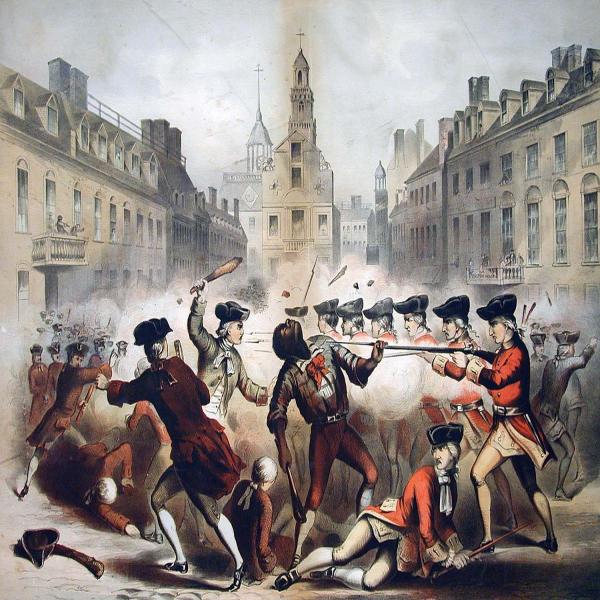Boston Massacre, March 5th, 1770
Original

Background Notes
Boston Massacre is a lithograph from J. H. Bufford’s (1810- 1874) lithography company in Boston, based on an illustration by W. L. Champney. This version of the Boston Massacre has one major difference from previous renditions of the event: it includes Crispus Attucks and portrays him as a central figure of the event. It is possible that, because this print was published in the 1850’s during the abolitionist movement, artists may have been more sensitive to representing blacks in their art.
Crispus Attucks (ca. 1723-1770) was the first casualty of the American Revolution. On the evening of March 5, 1770, a confrontation between soldiers and a group of townspeople resulted in five dead and six wounded. Attucks, of African and Native American descent, grew up in Framingham, Massachusetts, and was said to be a runaway slave who found work and spent many years as a sailor and rope maker in Boston. He, along with other local sailors and rope makers, felt particularly threatened by British soldiers and sailors who would often compete for part-time jobs with the locals during off-duty hours. This competition lead to a fight on March 2, 1770, between British soldiers and local rope makers, which helped fuel tensions that lead to the massacre a few days later. (1) Colonists, in general, were very agitated with the increased taxes put on them by the British government, as well as the increased presence of British troops in town. Tensions between the colonists and the British troops built to a point that made confrontation inevitable. (2)
The confrontation on March 5, 1770 that became known as the Boston Massacre, began when a large group of locals started taunting British soldiers with snowballs, stones, and clubs. At the head of this group was Attucks. Several British soldiers came to the rescue of the soldiers being taunted and open fired on the crowd. It is unclear whether Attucks attacked a soldier first, but he ended up being the first fatality from bullet wounds. Two others, Samuel Gray and James Caldwell, also died during the incident. Two others, Samuel Maverick and Patrick Carr died days later as a result of their injuries. Six others were wounded. (3)
Artist: W. L. Champney, who’s first name was probably William, was an illustrator, from Boston, who did some illustrations for books and magazines. (4)
Notes:
(1) http://www.pbs.org/wgbh/aia/part2/2p24.html
(2) http://www.africawithin.com/bios/crispus_attucks.htm
(3) http://www.africawithin.com/bios/crispus_attucks.htm
(4) Groce, George C. and David H. Wallace, The New York Historical Society’s Dictionary of Artists in America, 1564-1860, New Haven: Yale University Press, 1957. pg. 118.